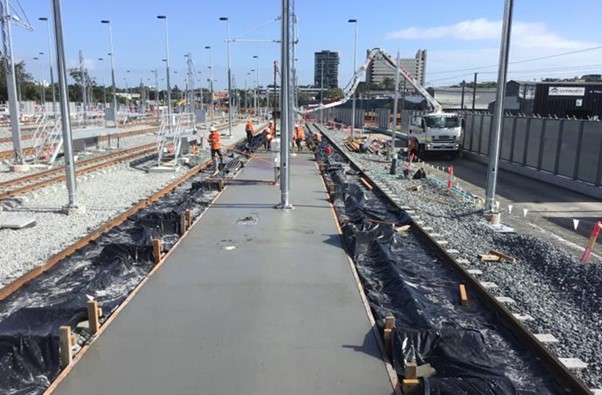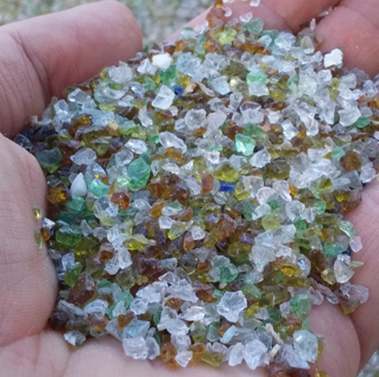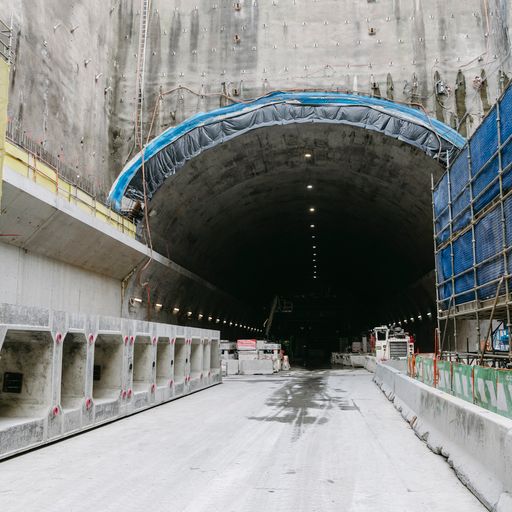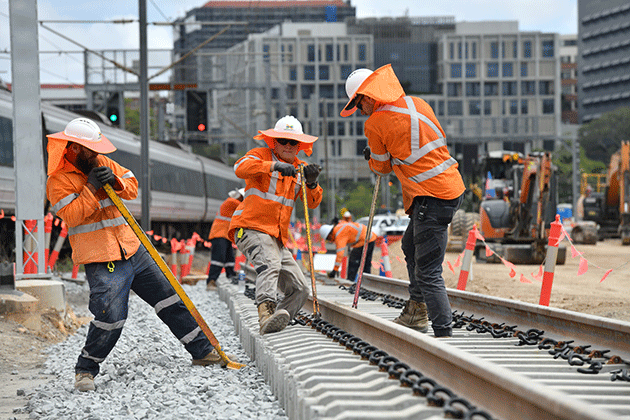Five sustainability initiatives reducing Cross River Rail’s carbon footprint
Project Updates
26 Oct 2022
While Cross River Rail will play a key role in reducing Queensland’s carbon footprint in the future as more Queenslanders opt to use public transport, the project has also adopted a range of sustainable practices to minimise its environmental impact during construction.
We take a look at five of the ways Cross River Rail is reducing its carbon footprint as the project continues to take shape.
eMesh

At Mayne Yard, some pavements are being reinforced with eMesh – small, recycled macro synthetic fibres – rather than steel.
The five-centimetre-long fibres in eMesh act as mini rebars for concrete, providing a more sustainable, safer and cost-effective alternative for concrete reinforcement.
Crushed recycled glass sand

So far, around 2,000 tonnes of glass sand – an alternative to sand made from finely crushed recycled glass – is being used on Cross River Rail as pipe embedment and bedding material under pavements.
This award-winning innovation is a first for South East Queensland, and is helping divert more glass from landfill and reducing our need to use quarried sand.
Spoil and waste re-use

Around 1.6 million cubic metres of spoil is expected to be generated over the course of Cross River Rail’s construction, more than 80 per cent of which has either been reused or is being stockpiled for future reuse.
One of the most fascinating uses for our spoil has come through a unique partnership with brick manufacturer Austral Bricks, who use the material to make bricks.
Austral Bricks will use Cross River Rail spoil to make around 120 million bricks a year for the next seven years – in fact, it’s expected roughly half of the brick houses built in South East Queensland over the next few years will contain our spoil.
Lower carbon concrete

Waste materials such as fly ash and slag are being used as a cement alternative in concrete across the project.
In some cases, as much as 60 per cent of cement in concrete mixes can be substituted for waste materials, which plays a huge role in lowering Cross River Rail’s carbon footprint – especially considering the amount of concrete used by the project.
Composite sleepers

Another exciting Cross River Rail sustainability innovation coming soon is a trial of composite plastic sleepers.
A lower carbon alternative to traditional concrete or timber sleepers, two types of composite sleepers will be trialled at the Mayne Yard stabling facility in 2023.
If the trial is successful, there is a view of using these sleepers more widely on Queensland’s rail network.
